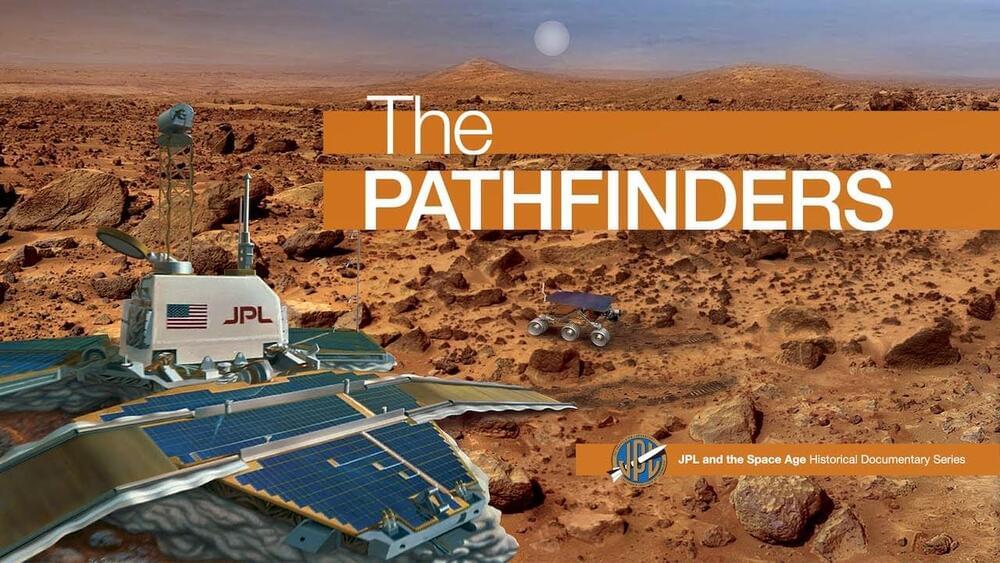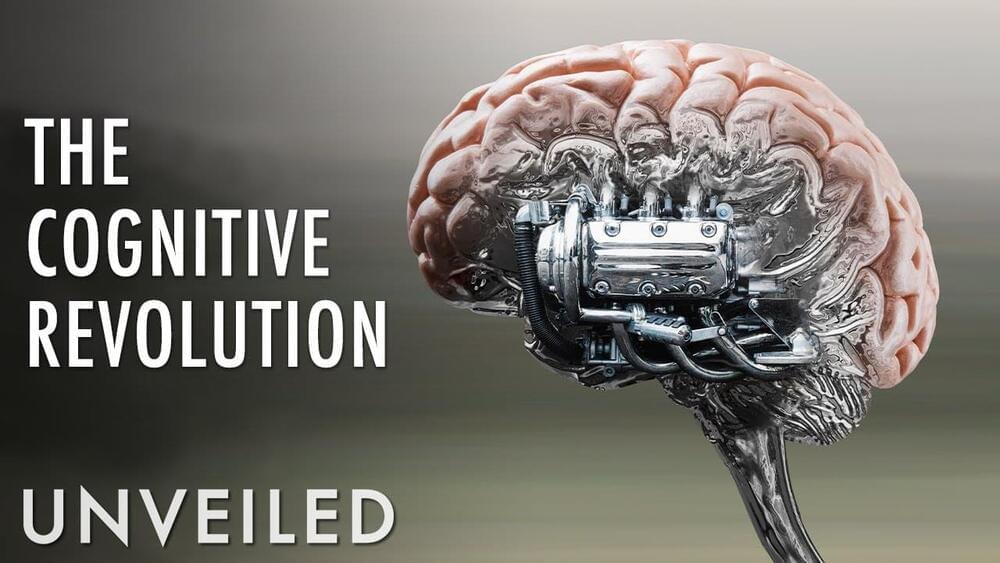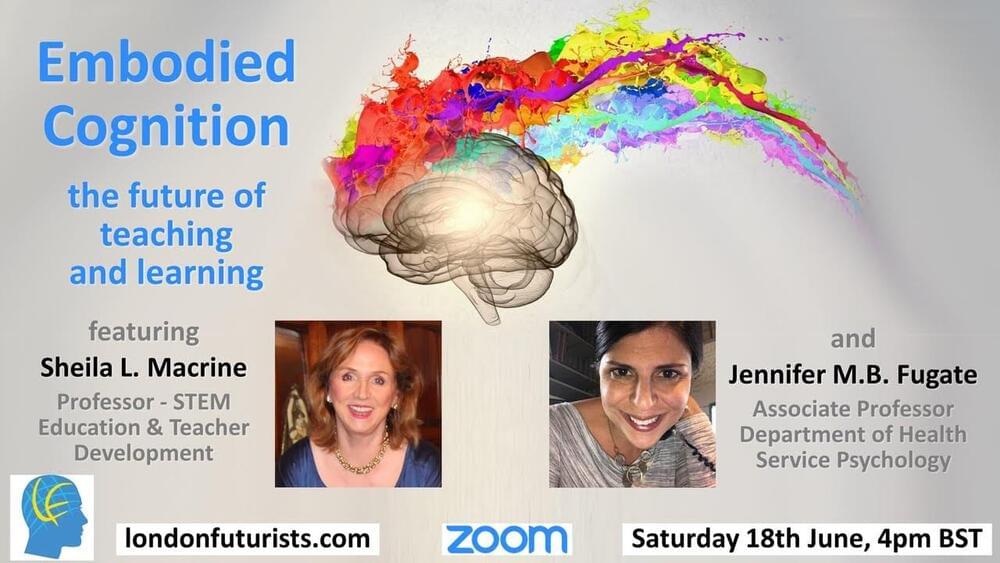Jun 28, 2022
CRISPR in the Classroom
Posted by Jose Ruben Rodriguez Fuentes in categories: biotech/medical, education
A new generation of scientists is growing up with CRISPR technology. Here’s how some high school students learn to edit genes.
A new generation of scientists is growing up with CRISPR technology. Here’s how some high school students learn to edit genes.

https://www.youtube.com/supported_browsers?next_url=https://…ture=share
Please share this event with someone that you care about.
Would you like to make a Donation to Perpetual Life? Your donations help us grow & improve our services. To donate, go to our website http://Perpetual.Life and use the PayPal button at the top right of the page. Thank you for your generous donations, we appreciate it immensely!
Continue reading “Bill Faloon presents a classic Age Reversal Update” »

It started with JPL agreeing to land something on Mars – cheaply – and do it in a radically different way. This is how the era NASA called “Faster, Better, Cheaper” began. The documentary film “The Pathfinders” tells the story of a small group of engineers at NASA’s Jet Propulsion Laboratory who did not heed warnings that the audacious challenge of landing on Mars with airbags would likely not be a career-enhancing move.
From relying on a parachute that could not be tested in a way to match the Martian atmosphere to receiving the late addition of an unwanted rover that wouldn’t have looked out of place in a toy store, the Mars Pathfinder mission was a doubter’s dream, taken on by a mostly young group of engineers and scientists guided by a grizzled manager known for his maverick ways.
The Universe is a vast place, filled with more galaxies than we’ve ever been able to count, even in just the portion we’ve been able to observe. Some 40 years ago, Carl Sagan taught the world that there were hundreds of billions of stars in the Milky Way alone, and perhaps as many as 100 billion galaxies within the observable Universe. Although he never said it in his famous television series, Cosmos, the phrase “billions and billions” has become synonymous with his name, and also with the number of stars we think of as being inherent to each galaxy, as well as the number of galaxies contained within the visible Universe.
But when it comes to the number of galaxies that are actually out there, we’ve learned a number of important facts that have led us to revise that number upwards, and not just by a little bit. Our most detailed observations of the distant Universe, from the Hubble eXtreme Deep Field, gave us an estimate of 170 billion galaxies. A theoretical calculation from a few years ago — the first to account for galaxies too small, faint, and distant to be seen — put the estimate far higher: at 2 trillion. But even that estimate is too low. There ought to be at least 6 trillion, and perhaps more like 20 trillion, galaxies, if we’re ever able to count them all. Here’s how we got there.

Artificial intelligence; it’s everywhere! Our homes, our cars, our schools and work. So where, if ever, does it stop? And how close to ourselves can our devices reasonably get? For this video, Unveiled uncovers plans to use human brain implants to improve the performance of our brains! What do you think? Are neural implants a good thing, or a bad thing?
This is Unveiled, giving you incredible answers to extraordinary questions!
Continue reading “What If Human Brains Had AI Implants? | Unveiled” »
Echolocation is a skill we usually associate with animals such as bats and whales, but some blind humans also use the echoes of their own sounds to detect obstacles and their outlines. Some use the tapping of a cane or the snapping of their fingers to make the necessary noise, while others use their mouths to make a clicking sound.
Despite how useful this skill can be, very few blind people are currently taught how to do it. Expert echolocators have been trying to spread t… See more.
With enough training, most humans can learn how to echolocate, using their tongue to make clicking sounds and interpreting the echoes that come back, reflected from the surrounding environment.
Continue reading “Humans Can Learn to ‘Echolocate’ in Just 10 Weeks, Experiment Shows” »
After some serious number crunching, a UBC researcher has come up with a mathematical model for a viable time machine.
Ben Tippett, a mathematics and physics instructor at UBC’s Okanagan campus, recently published a study about the feasibility of time travel. Tippett, whose field of expertise is Einstein’s theory of general relativity, studies black holes and science fiction when he’s not teaching. Using math and physics, he has created a formula that describes a method for time travel.
“People think of time travel as something as fiction,” says Tippett. “And we tend to think it’s not possible because we don’t actually do it. But, mathematically, it is possible.”
Mike LorreyThe arguments I put into my article in The Space Review for the Space Force are valid to this discussion. https://www.thespacereview.com/article/3576/1
Real-world examples make the abstract description of machine learning become concrete.
In this post you will go on a tour of real world machine learning problems. You will see how machine learning can actually be used in fields like education, science, technology and medicine.
Continue reading “Tour of Real-World Machine Learning Problems” »

Understanding the mind and how thinking occurs has been a challenge for philosophers, scientists, theorists, educators, and artists throughout history. Until recently, ideas about how we learn have been mainly theoretical and intuitive. However, with ongoing advances in neuroscience, considerable progress is occurring. As a result, a paradigm shift is taking hold in human cognition, pointing to a new science-based understanding about the way we think and, ultimately, the way we learn.
This paradigm shift — a move away from traditional notions of the mind to an “embodied cognition” model of human thinking and learning — is the subject of a new book “Movement Matters: How Embodied Cognition Informs Teaching and Learning”. The book is summarised as follows:
Continue reading “Embodied cognition and the future of teaching and learning” »
How small is a TRANSISTOR exactly? Companies like Intel and AMD talk about transistors being 2 or 3 nanometers large, but is that actually how small they are? In this video, we’re going to zoom in on the smallest devices and technologies that drive our modern world.
If you’re wondering why some devices are out of order in regards to size, here’s the reason. The order of devices shown is primarily organized by decreasing size, however sometimes we prioritize the year in which the technology was commercialized, and then a couple times we order the objects based on the flow of the animation.
Continue reading “Technology Size Comparison🤯🤯 3D Animation” »